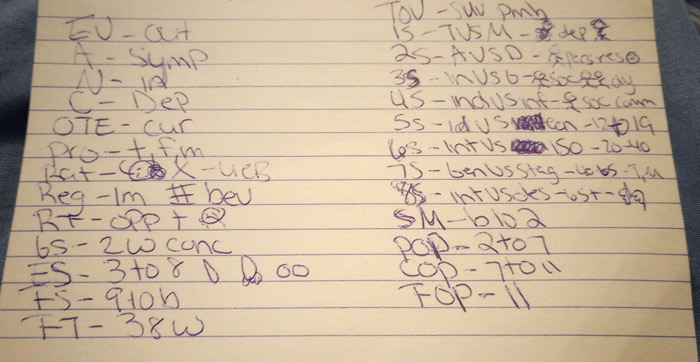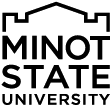A note card is a test and/or quiz accommodation designed to assist a student whose disability affects memory and recall. A note card allows a student to demonstrate understanding of the course material by providing a prompt, without stating the answer directly. This accommodation does not remove the need for studying but aids the student in retaining information.
Once the accommodation has been approved by Access Services, the student schedules a meeting with the instructor as quickly as possible to discuss this accommodation. Instructors can stipulate the size of the note card. Sizes of allowable note cards can vary but must fall between one side of a standard sized note card (3x5 inches) to one side of a standard piece of paper (8.5x11 inches).
The student is responsible for studying the content and determining what prompts are needed for recall. After creating the note card, the student must show the instructor at least 4 business days (96 hours) prior to the assessment. The instructor must examine the note card to ensure that it contains only prompts and does not remove or alter the course objectives. If a student and instructor are having difficulty agreeing on the content of the note card, the student is responsible for contacting the Access Services Coordinator for additional guidance.
A note card should NOT include:
- material copied from books, assignments, or practice exams.
- notes or PowerPoint slides.
- summaries of course material.
- fully solved math problems.
Instructors are responsible for collecting the note card and providing Access Services with the approved note card. The note card can be submitted with exam instructions.
The following are a variety of note card examples:
- Roy G Biv is a mnemonic for remembering the colors of a rainbow. Consider the exam question, what are the colors of the rainbow? If a student hasn’t studied, this tool wouldn’t be helpful in recalling a rainbow’s colors. A student’s note card might say: Rainbow - Roy G Biv.
- A prompt could be formed by utilizing the letters in the prompt itself. For example, if a student is developing a prompt to remember which ion is positive, the student may write cation, but the student shouldn’t directly write cation is +.
- A set of formulas may be used.
- See visual example below.






